- +353 (0)45 879 170
- info@caraghnurseries.ie
- Stickens, Caragh, Naas, Co. Kildare, Ireland
Hydrangea Season
Its Hydrangea Season and all around the nursery are Hydrangeas jut about to bloom. You probably know this already but I absolutely adore Hydrangeas, this goes back to my childhood and the memories they evoke, my mum always had Hydrangeas in the garden, great big mophead ones in pinks and purples and often cut some of the many heads and had them in vases throughout the house. Hydrangeas are one of those romantic looking flowers with a strong romantic vision in the garden and we are falling in love with them all over again with an even wider selection of different hydrangea varieties our grandmothers never even dreamed of. Some of the newer hydrangeas grow in colder climates, some are so small they will fit into the perennial border, and others have amazingly large blooms and deep colours.
Hydrangeas will thrive in most soil types. However, the pH of the soil will change the colour of the flowers of some of the varieties especially the mopheads. Some plants that usually offer pink flowers will appear blue if the soil is acidic. You can change the colour to blue by feeding with a fertiliser low in phosphorous and high in potassium. Alternatively, you can grow your plant in an ericaceous compost in a pot to keep it blue.
The beautiful flowers produced by this plant is what makes these so popular and one of my favourites. They flower in mid to late June to July depending on the weather and will bloom through to the Autumn. The large flowers come in a variety of shapes, colours, and sizes, their blooms can be pink, blue, red, white, purple and green and they like partial shade through to full sun, although the climber doesn’t mind a shaded north facing wall.
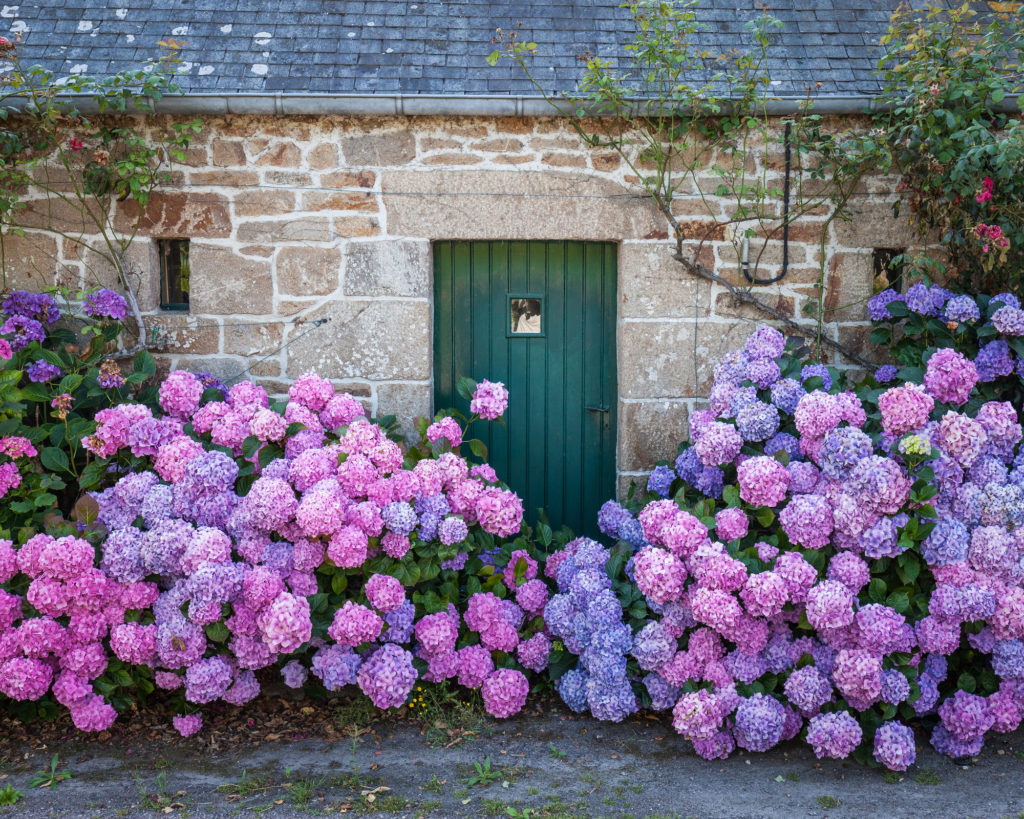
Hydrangeas love a moist, well-drained soil in a position of dappled shade is ideal. Avoid south-facing positions, especially if the soil if very dry as this will dry them out to much and we all know Hydrangeas do like moisture. The name hydrangea comes from the Greek words “hydor” meaning water and “angos” meaning vessel which roughly translate to water barrel . My memories of Hydrangeas are not from my grandmothers garden, my grandmother lived in the North of England in a row of terraces (yes very akin to Coronation St) with only a cobbled yard and a couple of pots. We did however spend many a holiday in Brittany and down the West coast of France and there was where my love of hydrangeas started.
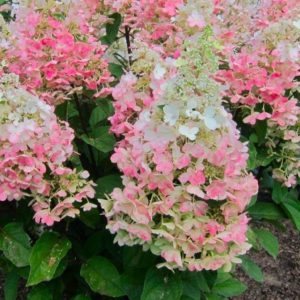
For a north-facing wall, grow the reliable climber Hydrangea Pietiolaris. If you want to grow your Hydrangeas into more of a hedge like effect then some of the larger flowering mophead varieties like Hydrangea Annabelle work better.
Their are many customs from around the world surrounding Hydrangeas
In Japan – According to a Japanese legend, the emperor gave hydrangeas to the family of a girl he loved to show how much he cared for her.
In the Victorian era, hydrangeas represent boastfulness, bragging and vanity. Especially white hydrangeas.
United States – Hydrangeas are used for 4th wedding anniversaries beats wood or paper!
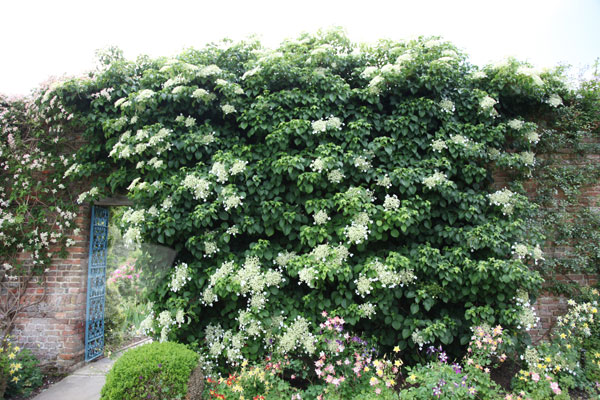
My love of Hydrangeas continues and my own garden has a good selection of different ones, although I love the traditional mopeds I am finding the paniculata (cone head) varieties easier to grow. The very stylish Hydrangea Annabelle is always a winner and probably our biggest seller, Sundae Fraise with its confectionary like pink into white reminding me of a Squashy!! The cool green-white of Limelight and to top it all off one which was I think is just stunning, probably doesn’t go with the rest quite so well but I adore it too much to leave out the Marvel Sanguine with its purple tinged leaves and dark Merlot blooms. Its smaller than the others and a little less reliable but worth all that. We have lots of new varieties ion Hydrangea available this year that we haven’t featured before and I’m just loving going down to our new Hydrangea beds, a new area recently completed over lockdowns ion the nursery which pretty much is wall to wall Hydrangeas and is just the most beautiful area at this stage in the year.
Some of these varieties include Hydrangea Endless Summer in a lovely big size, Hydrangea paniculate Polar bear and I bet you can’t guess the colour of this beauty. Hydrangea paniculate Confetti is a stunning Hydrangea as is the pinker Hydrangea Candlelight and both are available in two sizes. Early Rosa and Blue bird are more of the varieties we are loving and the list goes on and on.

For something a little more different, try the Oak leafed Hydrangea Quercifolia or the Quercifolia ‘Snow Queen’ they still have the more cone like flowers but have a distinctly oak shaped leaf and are much more suited to shadier areas and can be grown happily under a tree canopy, woodland planting at its very best. For the best of the blue colours try the Ayesha or the Mathilde Gutges or even the Bluebird all of which are stunning and don’t forget your ericaceous compost.

For larger blooms try the aptly named Grandiflora. We have also been growing a range of Hydrangea serrata, they’re smaller lace cap varieties that are flat with small flowers without petals in the centre and showy flowers with petals on the outside. Native of the mountains of Japan and part of South Korea were it grows in mountainous woodland, they grow to about 1metre tall and quite a few of our blue varieties are lace cap ones Annies Blue, Rosemary Foster, Bluebird and Blueberry Cheesecake as well as the Prims White.
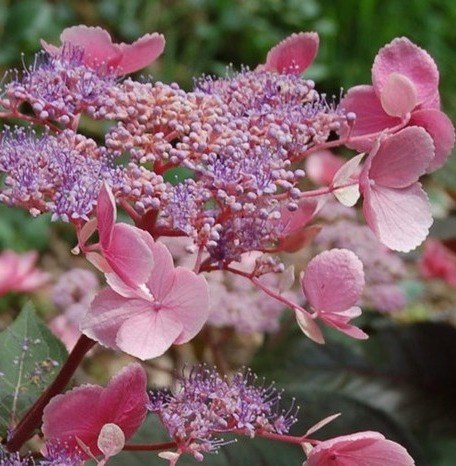
So now I have given you such a wide variety of options the only question is which one are you going to grow? And how much care do they need? Hydrangeas are very easy to grow and there are few pests and diseases that hinder them. Container-grown specimens may be prone to vine weevil attack and some plants will be damaged by frost. To avoid frost damage, leave the faded flowerheads on the plant and prune at the correct time. As there’s such a wide range of hydrangeas, it’s important to note that one pruning technique does not suit all. Climbing types are pruned in summer after flowering. Others are best pruned in spring or late autumn.
The faded blooms of hydrangeas are attractive in the winter months. Ideally, leave them on the plant over winter as on some types this protects the plant from frost damage.
When pruning mophead types it’s vital that you don’t deadhead below the top set of plump buds that are forming under the flower head. This is where the new flowers will form. Cut plants back to just above these fat buds.
Lacecap hydrangeas are tough so can stand deadheading in autumn. Both mophead and lacecap types will benefit if some of the oldest stems are cut back completely at the base of the plant. This will encourage new stems and should be done in February.
Hydrangea paniculata and Hydrangea arborescens flower on the current season’s growth so they should be pruned in spring. Prune old stems back to four buds. If you avoid pruning hydrangeas the flowers will soon get smaller and smaller.
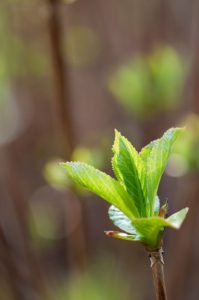
Caring for your plants to keep them looking their best. Although their appearance may seem high maintenance, with the right conditions and care, hydrangeas are actually fairly easy to grow, so grab your gardening gloves.
Hydrangeas are not marginal plants by any means and they do need good drainage but those fleshy stems and large, succulent leaves will tell you that they are heavy drinkers. Dry, sandy soil in full sun is not an option for these water guzzlers. If you are planting a new one, make sure that the soil in which you plant them has been beefed up with a good compost or manure (leave for enough time before planting) , which will act like a sponge and hold on to moisture when the surrounding soil is drying out. Water new hydrangeas copiously during the first weeks of their establishment at this time of year.
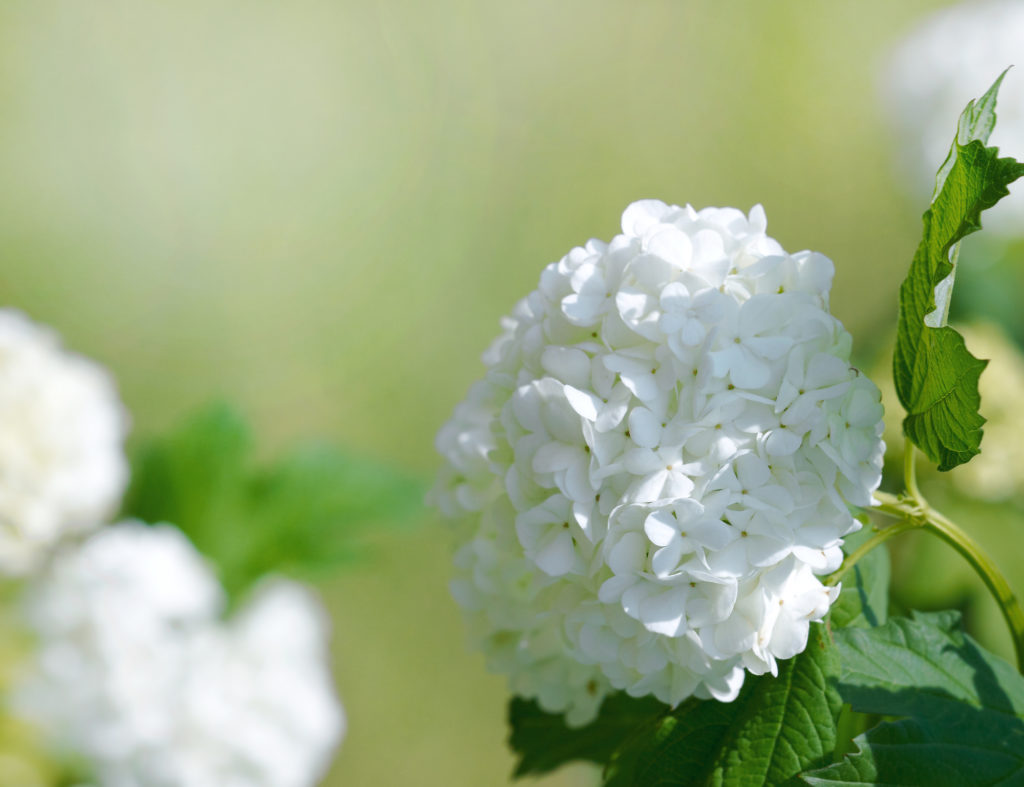
They can cope with full sunshine provided that the soil in which they are growing is not likely to dry out, so if you are on lighter stuff give them a spot in dappled shade where they are likely to be less stressed. If you are growing them in pots and tubs, water them every day in summer – morning and evening when it is hot and sunny – adding liquid feed once a week in spring and summer.
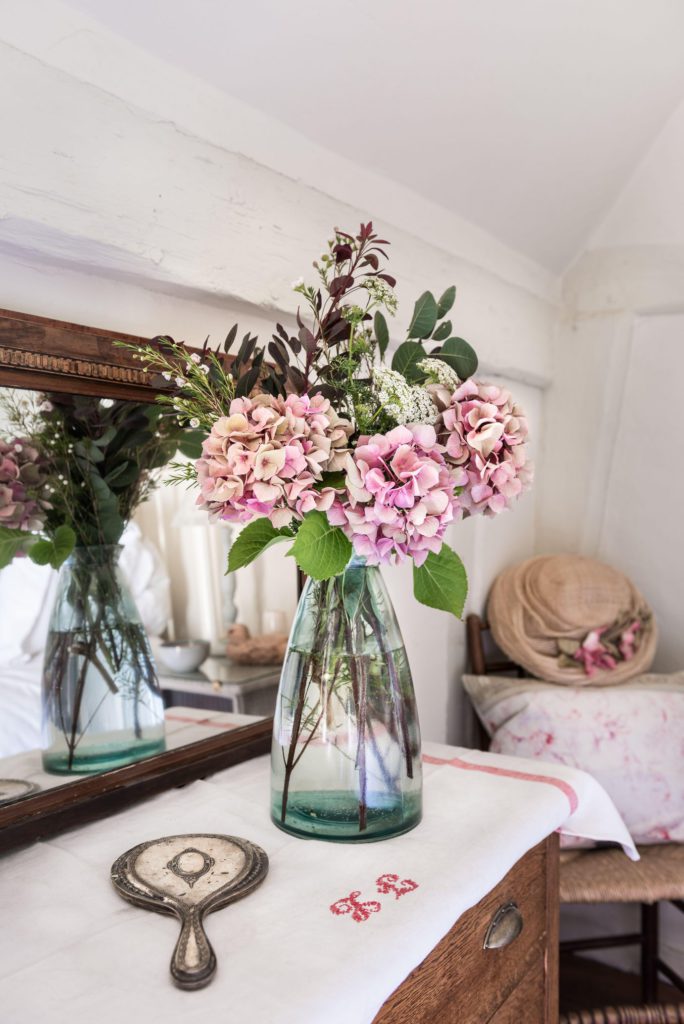
“The love of gardening is a seed, once sown that never dies” Gertrude Jekyll

Quick Links
Information
Location
- Stickens, Caragh, Naas, Co. Kildare, Ireland
FREE DELIVERY
Our Gift to you
On all orders made online over €100

